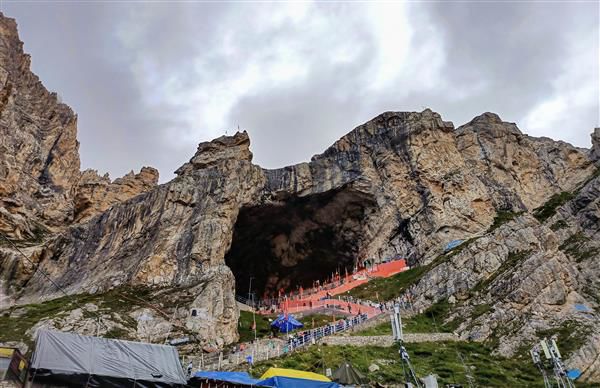The prophecy at Amarnath shrine
THE annual pilgrimage to the Amarnath shrine in south Kashmir commenced on June 29, with the devout undertaking the arduous journey to pay obeisance to Lord Shiva in the holy cave located at an altitude of about 3,800 metres. A quarter of a century ago, I made the journey to the abode of Baba Barfani.
In 1999, I was deployed in a Rashtriya Rifles (RR) unit in Anantnag district, carrying out counter-insurgency operations. Taking a short break, I decided to trek to Amarnath. An officer of my unit, Maj Ranbir Katoch, who was from the Army Air Defence Corps, asked me if he could come along. Ranbir always had a ready smile and was full of beans and guts — the kind of officer any commander would love to have in his team. On August 11, we set course for Pahalgam and onwards to Chandanwari, from where the onward journey of 32 km was on foot. A steep climb of about an hour took us to Pissu Top; after two more hours of brisk walking, we reached another landmark on this trail, Shesh Nag. With breaks in between, we traversed Mahagunas Top and Poshpathri, finally reaching Panjtarni by nightfall. Here was a large tented colony for pilgrims, and Ranbir shared a tent with me for the night.
On August 12, we were up at the crack of dawn and negotiated the final 6 km at a fast clip to be the first ones at the cave, much before the pilgrim hordes started moving up. The head priest of the shrine conducted a prayer for us, while we stood in reverence in front of the ice Shivling. Turning to me, he handed over prasad, a small vermillion box, bangles and a piece of red ribbon, telling me that these were for my wife as a blessing for marital longevity. He then turned to young Ranbir and said: ‘You must not be married yet.’
I was quick to correct him and informed him Ranbir was married. He expressed regret that since it was early in the morning, some of the puja items, including different kinds of prasad, had not arrived and he did not have any more of the marital symbols of blessing. However, he handed Ranbir some prasad and a miniature photo of the Shivling.
About three days later, we launched a cordon-and-search operation in a remote village, based on information about the presence of terrorists. Ranbir was in the outer cordon with his troops, and while combing a maize field, ran into two heavily armed foreign militants. In the ensuing gunfight, both militants were killed, but at a very heavy price. Leading from the front, Ranbir received a burst of automatic fire and made the supreme sacrifice.
Next morning, his embalmed body was sent on a commercial flight to Delhi, escorted by one of our officers. I remembered the incident at the holy cave when I paid my last respects to this braveheart — and it continues to haunt me. The ‘denial’ of marital blessings on that fateful morning was indeed prophetic.









